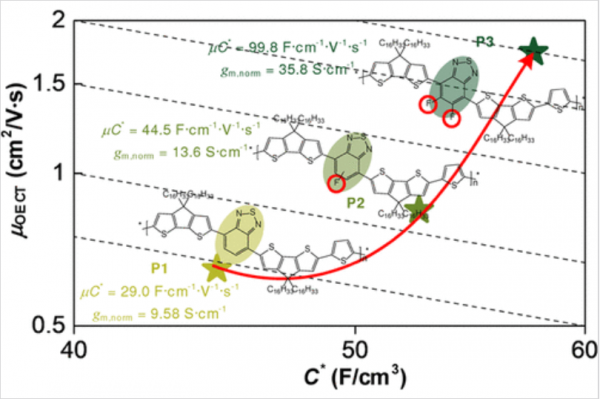Large Transconductance of Electrochemical Transistors Based on Fluorinated Donor–Acceptor Conjugated Polymers
- 저자
- Seongmin Heo, Jimin Kwon, Mingi Sung, Seunglok Lee, Yongjoon Cho, Haksoon Jung, Insang You, Changduk Yang, Junghoon Lee, Yong-Young Noh
- 저널명
- ACS Applied Materials & Interfaces, 15, 1, 1629-1638 (2023)
- 년도
- 2023
- Link
- https://doi.org/10.1021/acsami.2c16979 647회 연결
[Abstract]
Organic electrochemical transistors (OECTs) have enormous potential for use in biosignal amplifiers, analyte sensors, and neuromorphic electronics owing to their exceptionally large transconductance. However, it is challenging to simultaneously achieve high charge carrier mobility and volumetric capacitance, the two most important figures of merit in OECTs. Herein, a method of achieving high-performance OECT with donor–acceptor conjugated copolymers by introducing fluorine units is proposed. A series of cyclopentadithiophene–benzothiadiazole (CDT-BT) copolymers for use in high-performance OECTs with enhanced charge carrier mobility (from 0.65 to 1.73 cm2·V–1·s–1) and extended volumetric capacitance (from 44.8 to 57.6 F·cm–3) by fluorine substitution is achieved. The increase in the volumetric capacitance of the fluorinated polymers is attributed to either an increase in the volume at which ions can enter the film or a decrease in the effective distance between the ions and polymer backbones. The fluorine substitution increases the backbone planarity of the CDT-BT copolymers, enabling more efficient charge carrier transport. The fluorination strategy of this work suggests the more versatile use of conjugated polymers for high-performance OECTs.
